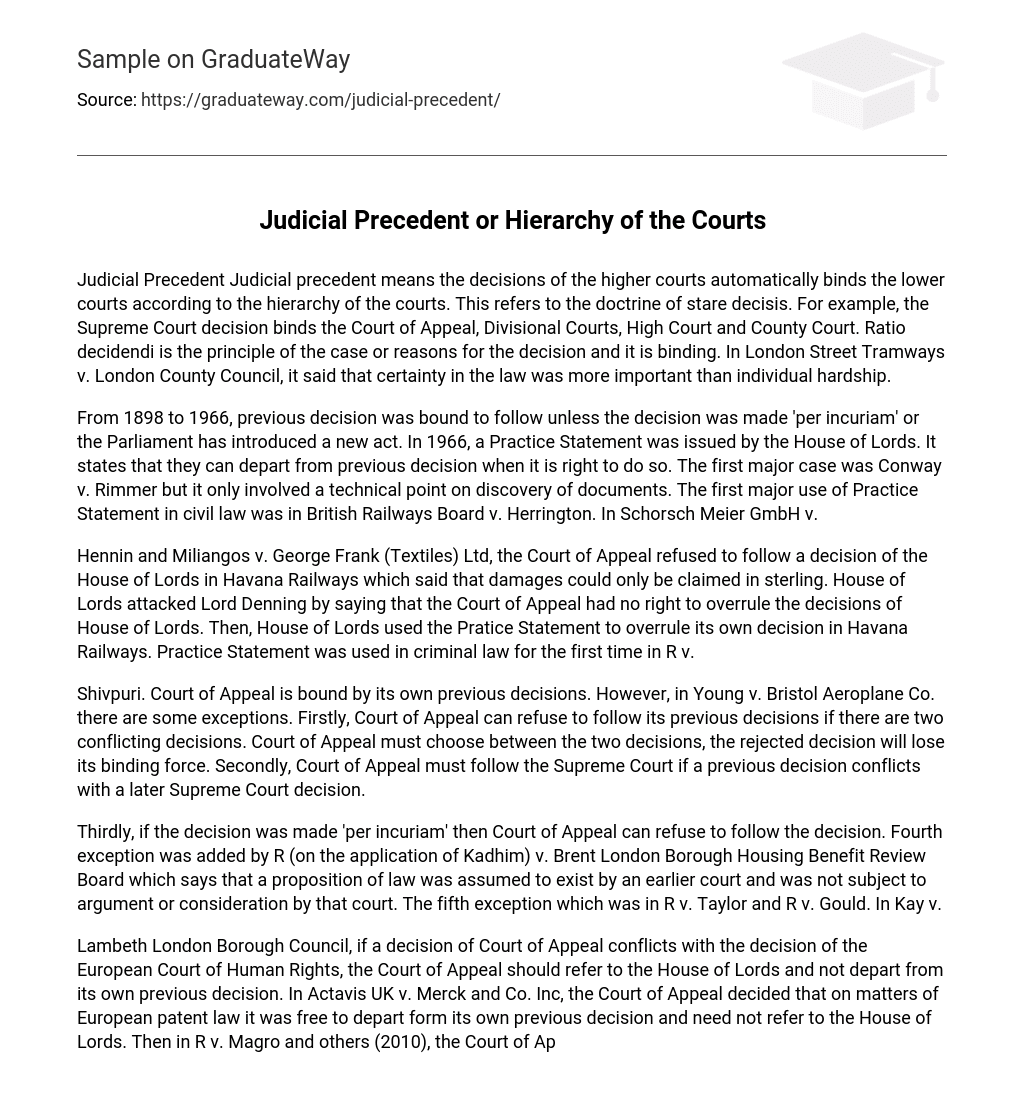Judicial Precedent Judicial precedent means the decisions of the higher courts automatically binds the lower courts according to the hierarchy of the courts. This refers to the doctrine of stare decisis. For example, the Supreme Court decision binds the Court of Appeal, Divisional Courts, High Court and County Court. Ratio decidendi is the principle of the case or reasons for the decision and it is binding. In London Street Tramways v. London County Council, it said that certainty in the law was more important than individual hardship.
From 1898 to 1966, previous decision was bound to follow unless the decision was made ‘per incuriam’ or the Parliament has introduced a new act. In 1966, a Practice Statement was issued by the House of Lords. It states that they can depart from previous decision when it is right to do so. The first major case was Conway v. Rimmer but it only involved a technical point on discovery of documents. The first major use of Practice Statement in civil law was in British Railways Board v. Herrington. In Schorsch Meier GmbH v.
Hennin and Miliangos v. George Frank (Textiles) Ltd, the Court of Appeal refused to follow a decision of the House of Lords in Havana Railways which said that damages could only be claimed in sterling. House of Lords attacked Lord Denning by saying that the Court of Appeal had no right to overrule the decisions of House of Lords. Then, House of Lords used the Pratice Statement to overrule its own decision in Havana Railways. Practice Statement was used in criminal law for the first time in R v.
Shivpuri. Court of Appeal is bound by its own previous decisions. However, in Young v. Bristol Aeroplane Co. there are some exceptions. Firstly, Court of Appeal can refuse to follow its previous decisions if there are two conflicting decisions. Court of Appeal must choose between the two decisions, the rejected decision will lose its binding force. Secondly, Court of Appeal must follow the Supreme Court if a previous decision conflicts with a later Supreme Court decision.
Thirdly, if the decision was made ‘per incuriam’ then Court of Appeal can refuse to follow the decision. Fourth exception was added by R (on the application of Kadhim) v. Brent London Borough Housing Benefit Review Board which says that a proposition of law was assumed to exist by an earlier court and was not subject to argument or consideration by that court. The fifth exception which was in R v. Taylor and R v. Gould. In Kay v.
Lambeth London Borough Council, if a decision of Court of Appeal conflicts with the decision of the European Court of Human Rights, the Court of Appeal should refer to the House of Lords and not depart from its own previous decision. In Actavis UK v. Merck and Co. Inc, the Court of Appeal decided that on matters of European patent law it was free to depart form its own previous decision and need not refer to the House of Lords. Then in R v. Magro and others (2010), the Court of Appeal decided that even if the decision of the Supreme Court was wrong, it was binding.





